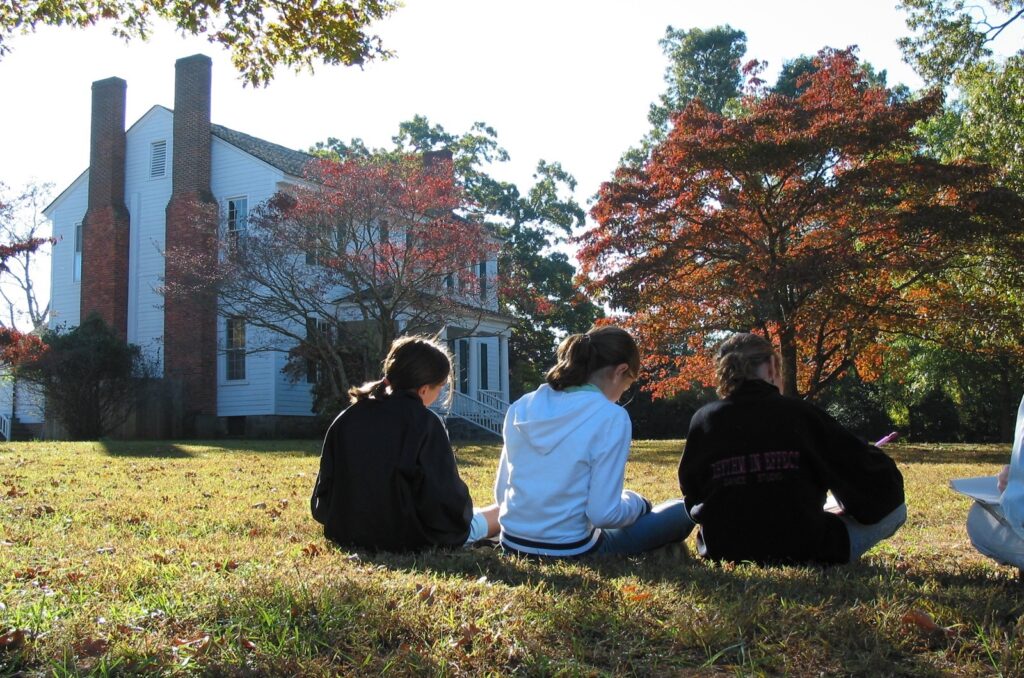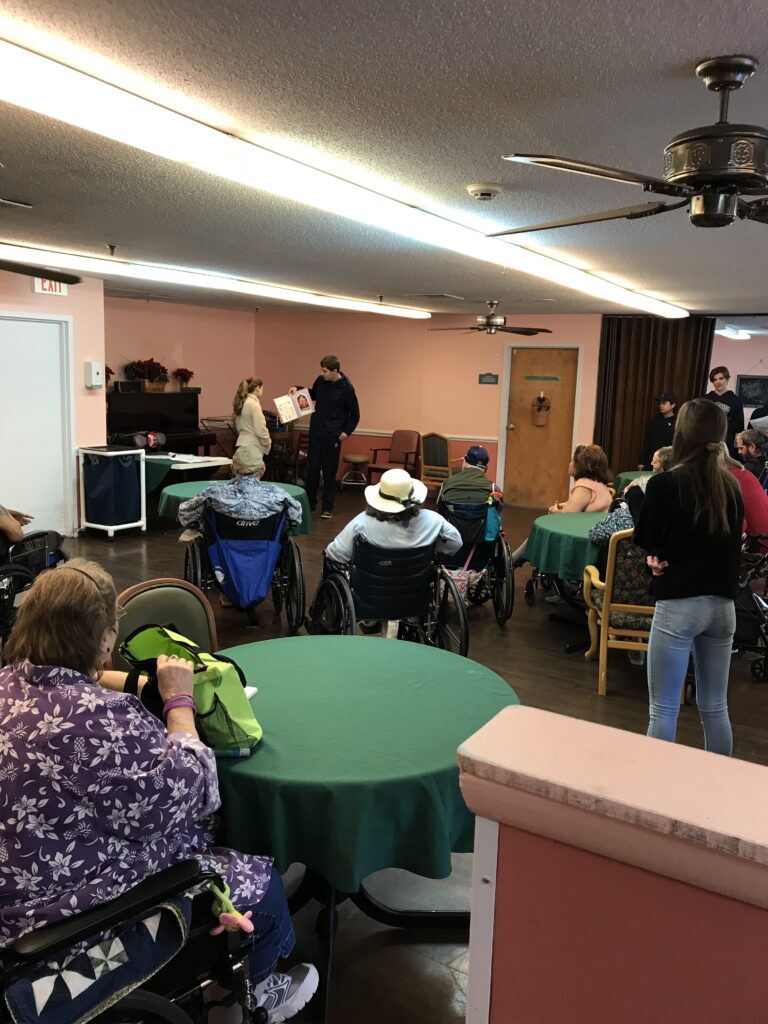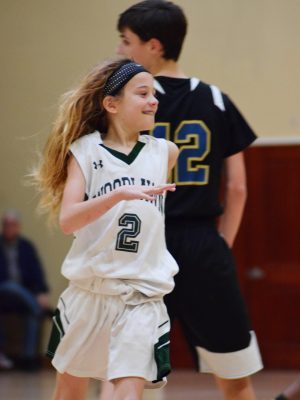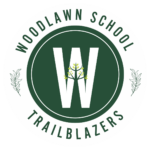A GREATER SENSE OF SELF AND OUR ROLE IN SOCIETY
MIDDLE School Curriculum
The core subjects of our Middle School program are Language Arts, Social Studies, Math, Science, and Spanish. Enrichment classes include Visual Arts, Music, Fitness, Service Learning, and Gardening. Students also have the opportunity to choose from a variety of electives classes offered throughout the year. The Middle School curriculum is driven by essential questions that are designed to fulfill Woodlawn’s mission:
+ Sixth Grade: What does it mean to be part of a society?
+ Seventh Grade: What does it mean to be human?
+ Eighth Grade: How did we get here?
CURRICULUM
ENRICHMENT
SERVICE LEARNING
Anchors learning in Real World Experiences
MATH
Sixth Grade Math
Sixth graders begin the year by becoming familiar with Algebraic reasoning as they study the operations and properties of integers and the real number system. In the winter trimester, students focus on proportional relationships and percents. They study data, graphs, and functions in more depth and create various types of graphs by hand and with spreadsheet software. During the spring trimester, students solve equations and inequalities and work with the properties of 2-D and 3-D geometric figures.
Seventh Grade Math: Pre-Algebra
Seventh graders begin the year studying the principles of Algebra. They draw models to facilitate the transition of the concrete mathematical operations that they have learned in previous years into the abstract concepts of Algebra problem solving. Students solve multi-step equations to enable them to problem solve with percents and proportions. They investigate squares, square roots, and the properties of exponents. They study data in more depth and create various types of graphs by hand and with spreadsheet programs to represent data. In the spring, students graph lines on the coordinate plane and study non-linear functions. They investigate geometric figures in the coordinate plane and work on scaling geometric figures. Problem-solving real world applications, data analysis, proficiency with spreadsheets, and collaboration using Google Documents are all components of seventh grade Pre-Algebra
Eighth Grade Math: Algebra I
In Algebra I, students examine how the properties of real numbers, symbols, variables, expressions, equations, and graphs have enabled us to advance in the use of mathematical applications to get where we are today. They complete application problems where they consider change over time – the interdisciplinary theme for the 8th grade year. Students analyze graphs and learn to think critically as they look at change over time in relation to the algebraic concept of slope – as well as to the historical changes that have occurred over time. Students learn how algebraic knowledge is useful in the everyday lives of people as they make decisions. They apply this knowledge as they analyze data about how the cost of education relates to its value and they determine how to invest for college. They also examine life expectancy, both in the past and in the future. In the spring, students investigate the algebraic analysis of quadratic equations, polynomials, and radicals and learn how this analysis helps people solve problems and plan for the future. They analyze financial information and compare different investment strategies. In their final project, they model the population growth of various cities in the US and use their models to predict future population.
Finding a place in the world
Social Studies
Sixth Grade Social Studies
Sixth grade students experience the “Greatest Hits of European History” to gain a sense of what life was like in societies of Europe’s past and how history has influenced European societies and world societies today. Students begin with Greek city-states, then examine the enormous reach of the Roman Empire and learn about the feudal system of the Middle Ages. Students focus on the French Revolution, the Industrial Revolution and the Russian Revolution and see how societies dealt with these colossal societal changes. Students also learn about modern Europe, its geography, countries and culture. Sixth graders look at the two World Wars and their effect on Europe’s world view and future. Throughout the year, 6th Graders seek to better understand how different societies and individuals have come together to write the history of Europe.
Seventh Grade Social Studies
Seventh grade students study Asia, Africa, and the Middle East; focusing on geography, history, cultural trends and groups, key individuals, and current events. While studying these topics, we investigate how human nature and human beings shape history. Conversely, we look at how geography and cultural diffusion have shaped human civilizations. Students investigate how human beings fit within their cultures and the influence their roles have in the lives of other people. We examine how a lack of respect for, or a misunderstanding of, other cultures can lead to oppression or conflict. This understanding of stereotypes helps break through misconceptions. Finally, students evaluate how human nature, for better or worse, has impacted these nations and cultures. By looking at the past, we can draw a direct line between the events that have occurred, the motivations that led to them, and their impact on today’s world. Seventh graders participate in the National History Day (NHD) academic contest where they learn about primary resources and how to conduct in-depth research in preparation for submission of a historical paper.
Eighth Grade American History
Eighth graders make connections to events from the past and present and study concepts such as: freedom, unity, progress, and responsibility in an attempt to answer our interdisciplinary question – How did we get here? Students also make note of common themes that emerge in history such as reform, determination, and hope. These concepts and themes are present in the primary and secondary historical resources students use, as well as in the fiction and nonfiction selections students read in class. Our study of the 19th and 20th centuries focuses on gaining a sense of place and historical context as students read and discuss main themes from novels, poetry, plays and even musical lyrics of the time. Participation in the National History Day (NHD) academic contest continues in the eighth grade year, and after in-depth research, students choose to create a documentary, exhibit, paper, performance, or website. Students culminate their American History studies by visiting Washington, DC in the spring.
“Failure is the opportunity to begin again more intelligently.”
– Henry Ford
A centraL role in the discovery Process
Science
Sixth Grade Science
In 6th grade science, students examine important elements of the natural world and consider their interconnectedness. Students begin by growing their own gardens and experience how plants are important for animal survival. Students then study Woodlawn’s own certified National Wildlife Foundation garden to learn about the relationship between plants and insects. To expand their knowledge, students visit a local park to survey the protected Monarch habitat and consider how humans might protect animal habitat. Using what they have learned, they write and design a performance piece to inform others about the benefits of insects. Throughout the year, students focus on the form and function of the eight major phyla of the animal kingdom and seven major classes of chordates, cataloging the many ways animals have found to survive on earth. In an integrated unit on bird migration, students learn about migratory behaviors of animals. Throughout the spring, students gain an appreciation of biodiversity and the complexity of ecosystems to gain a greater understanding of how they can live in harmony with the natural world.
Seventh Grade Science
Students begin the year with studying the chemistry of living and nonliving things to make sense of our natural world as humans. While studying chemistry, seventh graders look at the molecular structure of materials to determine how they will interact. Through the observation of chemical reactions, students learn how to determine what reactions have occurred. The chemistry unit transitions into a study of human biology with a focus on cellular dynamics, functions of the body systems and organ system pathophysiology. The year continues with the study of the life processes and how structures evolve. To culminate the seventh grade year, students study air pollution, which brings our curriculum full circle as we revisit chemistry and design green buildings to reduce air pollution.
Eighth Grade Science
Eighth graders uncover the answer to our essential question by investigating natural laws of physics that explain how our universe, solar system, and unique environment on Earth came about. Students examine the conversion and flow of energy through ecosystems. Throughout their science coursework, students continually explore the tools and technology that allow scientists to develop their understanding of the universe. The year culminates with an interdisciplinary project in which students incorporate principles of ecology and water management into a design in order to understand factors that affect a watershed, raise community awareness regarding negative impacts to a watershed, and develop a solution to address one of those threats or negative impacts, which can then be implemented in the local community.
MULTI-SENSORY APPROACH
LANGUAGE ARTS
Sixth Grade Language Arts
Guided by the essential question, What does it mean to be part of a society?, 6th grade students uncover the roots of Western literature beginning with Greek mythology. They analyze how stories reflect societies, as well as how stories have been used as criticism of flawed societies. Students read historical fiction from the medieval and Renaissance periods, the Industrial Revolution, and both World Wars. Students investigate how stories can effect change and how individuals respond to oppressive societies. They also focus on the elements of fiction, including plot, characterization, theme, point-of-view, and setting. Students work toward creating thorough, well-organized responses to literature. Developing strong paragraphs, incorporating transitions into their writing, and crafting a thesis statement are critical areas of focus in writing during the sixth grade year.
Seventh Grade Language Arts
What does it mean to be human? is the essential question for 7th grade and drives the literature themes. Students read works set in Asia, Africa, and the Middle East. They create a variety of projects as they learn to work creatively, independently, and collaboratively. Students write short answers, long answers, letters, lists, personal essays, persuasive speeches, creative log entries, poems, profiles, short scripts, and more. They learn to do self-assessments, lead discussions in class, and share what they have learned through speeches and discussions. Students incorporate research and quotations into both literary responses and research papers. For their National History Day essays (written in Language Arts and Social Studies), students compose outlines, learn citation, and annotate bibliographies. The year culminates with a choice-based project, Mission X, and an integrated project, Small Home Big Life, where they use their writing and presentation skills to effectively share a home they have designed to a real client.
Eighth Grade Language Arts
How did we get here? This is the essential question for 8th grade and drives the themes for Language Arts. Students read select literature (letters, novels, stories) from early explorers, early Americans, and modern American authors. Students write imaginative letters from the perspectives of early explorers and indigenous peoples. They read and appreciate the storytelling culture of settlers through Wynema and other writings of the colonial era. Students read short stories from early America, study story structure, and then write their own stories. Students continue to study grammar, punctuation and formatting and become strong writers through rewriting multiple drafts of essays, literary analyses, profiles, short stories, journalism, and poetry. During the spring trimester, they have the opportunity to develop their own language arts project, Mission X. Students finish the year applying their writing and presentation skills to inform and persuade an audience to protect our watershed.
COMPREHENSION + ACQUISITION
SPANISH
Sixth Grade Spanish
Starting in middle school, students learn Spanish through Comprehensible Input, a teaching approach that prioritizes the acquisition of the language through as much exposure as possible. Sixth graders interact with the language through authentic resources like Spanish language novels, film, and music, as well as class-created stories and artwork. Throughout the year, students explore the cultural aspects of Hispanic society through food, family, city life, and celebrations (i.e., Chilean Independence Day and a Mexican Posada). Students learn to appreciate a culture outside of their own through a study of Hispanic Heritage Month and a project that focuses on a specific Latin American country. Students learn how to ask questions and respond appropriately as well as tell simple stories. By the end of sixth grade Spanish students are able to hold simple conversations in Spanish and write paragraphs describing their likes, dislikes, and daily activities.
Seventh Grade Spanish
Seventh graders continue to learn Spanish through Comprehensible Input. Students bolster their vocabulary in Spanish by reading two Spanish-language novels, Tumba and Robo en la noche. Through in-class discussions, students gain insight into many other cultural perspectives as they learn to converse about daily pastimes, the food they eat, housing, and clothing. Daily shared writing leads to solo writing and students should end the year with the ability to write about a page on their personal interests.
Eighth Grade Spanish
In this last year of middle school Spanish, students prepare for High School Spanish courses by cementing basic communication structures and gaining confidence in speaking in Spanish. Eighth graders begin the year by studying the conquistadores’ contributions to the New World and writing a first person narrative to be shared in our Living Museum, as well as read a novel in Spanish about the period. They then focus on the musical contributions of Latino artists during Hispanic Heritage Month. Students also look at how Hispanic populations have changed over time in this country. They continue this study by discovering the ancient cities of Mesoamerica to present day Mexico, DF, and read a second novel in Spanish. Throughout the year, students look at how past and present people and places have shaped our own society and language usage today.




CURRICULUM
ENRICHMENT
SERVICE LEARNING
A centraL role in the discovery Process
Enrichment

Visual Arts
The visual arts program at Woodlawn engages students in making, interpreting, and learning about art in a meaningful way. Students learn skills, concepts, and ways of interacting with art that fosters an understanding of their own lives and the lives of others. The various areas of art and design students may choose to engage in are typically related to what they are learning about in other subjects, or influenced by local artists and community exhibitions. While learning about art and developing skills and techniques, the students are guided by the Studio Habits of Mind: Develop Craft, Engage and Persist, Stretch and Explore, Observe, Express, Envision, Reflect, and Understand Arts Community. Working through design problems they have chosen to pursue, students practice the studio habits and document their creative process. Through self-reflection and constructive feedback, students determine when their work is ready to be displayed and decide how and where to present their original art pieces in multiple exhibitions throughout the year. Trips to local museums and galleries provide students the opportunity to analyze and interpret a variety of artworks. We cultivate an environmentally sustainable art curriculum that utilizes reclaimed and recycled materials whenever possible, and makes meaningful connections with artists and artwork that address environmental issues.

Musical Theatre
The middle school music and theater curriculum focuses on building students’ music knowledge by fully understanding music history, theory, and covering several genres from classical to rap, from bluegrass to bebop. Music is integrated into the subject areas in each grade level as natural connections are made. In eighth grade, music and service learning are integrated as students create music for emotion and perform monthly for the residents of the Brian Center. Middle school students have the opportunity to work with upper school students and participate in the annual school musical, which is performed during winter trimester. Middle school students explore musical theater and theater performance as well as acting techniques through weekly classroom drama activities and skills practice. Students practice acting, dance and voice and this collaborative method emphasizes training of the whole actor with a deeper integration of the skills needed to develop students’ craft.

Middle School Fitness
Middle School Fitness teaches the value of healthy living through physical activity, appraisal of personal health, fitness and injury prevention, game skills, and the promotion of sportsmanship and self-confidence. Students explore the notion that a truly healthy person is one who understands and nurtures their mental, physical, and emotional being. Students learn techniques needed to master cooperative and competitive games such as volleyball, soccer, basketball, football, and kickball. They learn about skill-related components of fitness such as agility, balance, coordination, power, reaction time, and speed. Leadership qualities are enhanced through cooperative games and trust-building activities. Students continue to participate cooperatively, follow directions, and encourage other players on the field.

Gardening
Woodlawn School’s organic vegetable and flower garden serves as an outdoor classroom for gardening and science classes where students can gain exposure to the natural world and all its processes – biological, chemical and physical. Students in sixth grade spend time in the gardens each fall and spring growing vegetables, herbs, and flowers. Students plant, weed, harvest, add compost, and have fun learning science concepts in the gardens. At the end of the growing season, students take home organic produce they have grown themselves. Woodlawn uses organic gardening methods and does not use chemical fertilizers or weed killers. Students pull weeds and enrich the soil with nutrients by adding compost. Organic gardening practices provide a wholesome environment for Woodlawn’s students and teach students how to be good stewards of the earth.

Life Skills
Understanding how to best tackle life skills can be tricky as adolescents navigate change during the middle school years. Through weekly life skills classes, middle school students discuss relevant topics. Through small and large group discussions and activities, students discover that the middle school years are a time of growth and change and can be a rewarding experience as they begin to discover who they are, what they believe in, and how important they are in this world. Peer interactions are a critical yet confusing part of adolescent development. Open dialogue in a safe environment and self-reflective writing allow students to share challenges and opportunities that they are currently facing. This journey of self-discovery at the beginning of their middle school experience naturally branches into an exploration of the multiple ways a student can be a leader. Units are presented through thematic literature, journaling, role-playing, skits, discussion, and reflection.
CURRICULUM
ENRICHMENT
SERVICE LEARNING
Serving the community
SERVICE LEARNINg

Sixth Grade Service: Animal Advocacy
The sixth grade service learning program focuses on animal advocacy. Students participate in a variety of activities that allow them to learn about domesticated and wild animals and how to advocate for animal protection and proper animal care. Students work throughout the year to understand the importance of responsible animal ownership, working to educate their community about various topics related to ethical animal treatment. They also advocate for wild animals through an integrated presentation about the wonders and benefits of insects and a performance piece about migratory birds. They partner with Piedmont Animal Rescue to learn common reasons for animal surrender and develop materials for potential pet owners that address these concerns. Students also work to support this organization by raising money selling homemade dog biscuits at Christmas in Davidson, holding donation drives, making beds and toys for animals, and creating animal care packets for current and future pet owners. At the end of the year, students choose one habit they will commit to practicing, or an organization they will commit to supporting as an advocate for animals.

Seventh Grade Service: Sustainability
The aim of seventh grade service is to introduce students to sustainability as a way to become positive contributors to our society. Through class discussions, readings, and field experiences, students explore a variety of environmental issues facing our local, regional, and global community. Using what they learn from these experiences, they develop educational opportunities for others so they can incorporate sustainable practices into their own lifestyles. Integrating service learning with science, language arts, and visual arts, they design and create public service announcements about creative reuse, and develop action plans to enact on our campus, and in our local community to help develop a sustainable society. Through this process, students come to recognize the positive impact they can have on our community and our environment.

Eighth Grade Service: Bridging Generations
The eighth grade service learning program, Bridging Generations, is designed to develop an appreciation and respect for the older adults in our society. As we grow in our understanding of the roles cast upon the aging in our society, we explore the complex world in which the “old” must learn to live. Students closely evaluate the misconceptions and labels that are sometimes tagged to older adults, and learn about the aging process, and the challenges older adults face. They learn to design and adapt activities for older adults that entertain and engage. Through reflections, class discussions, and visits to Accordius Health (formerly known as the Brian Center,) students develop a sense of empathy and concern for human beings, regardless of their position in life. The service learning activities are student driven, providing an opportunity for the development and practice of planning, organization, collaboration and presentation skills. While creating friendships and learning about history through the life stories of residents, students become more aware about the community in which they live.





REAL WORLD EXPERIENCE
DISTINCTIVE ELEMENTS
Woodlawn students are offered real life experiences in a range of categories from organic travel abroad, common hours, overnight trips, and life skills. Each experience providing a new perspective and approach in what it means to be a responsible and contributing member of society.





